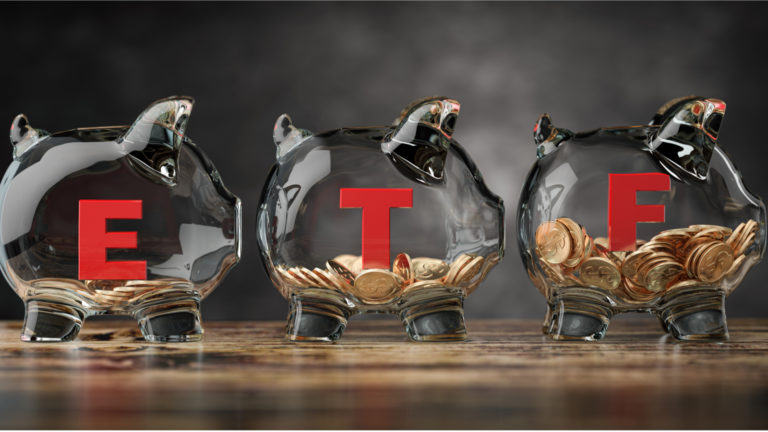Where does one look to find the best all-cap ETFs? The answer is trickier than you think.
Search the words large-cap ETF at VettiFi.com, and it gives you 933 funds. Do the same with mid-caps and small caps, and it lists 75 and 101, respectively. Surprisingly, all-cap ETFs generate 140 funds.
Surprisingly, most of the names on the all-cap list are large caps in disguise.
VettaFi defines all-cap equity ETFs that can invest in equities of all market capitalizations, from large to micro caps. Investopedia defines them the same way.
As a result of this definition, you can have all-cap ETFs that say they look at all companies, regardless of size, but then invest 90% of their net assets in large caps. To me, that’s not an all-cap ETF in the true spirit of the name.
The largest all-cap ETF, according to VettaFi, is the Dimensional U.S. Core Equity 2 ETF (NYSEARCA:DFAC), which has $24.2 billion in net assets. Approximately 53% of its portfolio is large cap, followed by mid-caps (27%) and small caps (21%).
That comes surprisingly close to my criteria for including an all-cap ETF in my recommendations, which is at least 25% of an ETF’s net assets allocated in each of the three company sizes.
Here, then, are my three all-cap ETF recommendations.
SPDR S&P Kensho New Economies Composite ETF (KOMP)

SPDR S&P Kensho New Economies Composite ETF (NYSEARCA:KOMP) tracks the performance of the S&P Kensho New Economies Composite Index, a collection of U.S.-listed stocks based in developed and emerging markets.
The names in the index are companies with products and services that drive innovation and transform the global economy by using existing and emerging technologies such as robotics, automation, artificial intelligence, connectedness and processing power.
Launched in October 2018, it has gathered $1.82 billion in net assets, partly due to its low management expense ratio of 0.20%.
The ETF currently has 441 holdings, four more than the index. The median size of companies in the index is $6.56 billion, ranging from $12.3.4 million at the low to $2.89 trillion at the high end.
The weighting by caps: Large caps (28%), mid-caps (30%), and small caps (43%). While Morningstar.com only gives it two stars, this is the allocation I’m looking for in an all-cap ETF.
The top three sectors by industry are Application Software (12.25%), Aerospace & Defence (10.22%), and Semiconductors (5.76%). The top 10 holdings account for just 11% of the portfolio.
Invesco High Yield Equity Dividend Achievers ETF (PEY)

The Invesco High Yield Equity Dividend Achievers ETF (NASDAQ:PEY) tracks the performance of the NASDAQ US Dividend Achievers 50 Index, a collection of 50 companies from the Nasdaq US Broad Dividend Achievers Index with the highest
modified dividend yield.
To qualify for inclusion in the index, a company must have increased its annual dividend in the last 10 years and have a market cap of over $1 billion.
The ETF got its start in December 2004. In the 20 years since, it’s attracted $1.3 billion in net assets, charging 0.52% for its services. The index is reconstituted once in March and rebalanced quarterly in March, June, September and December.
As for the market-cap weights, large caps have a 25% allocation, mid-caps (29%), and small caps (45%). In this instance, the weightings don’t equal 100% due to rounding.
The average stock held by PEY has a weighted average market cap of $33.3 billion, with a forward P/E ratio of 13.02 and a price-to-book ratio of 1.63.
With a 4.6% yield, it’s generated a 15-year annualized total return of 11.92%. If you like dividends, this is an ETF for income and growth.
Vanguard US Quality Factor ETF (VFQY)

As Vanguard ETFs go, Vanguard US Quality Factor ETF (BATS:VFQY) is not a large fund with just $244 million in net assets after six years in existence — it launched on Feb. 13, 2018.
Vanguard’s Quantitative Equity Group actively manages the ETF. The names it invests in have relatively strong fundamentals, including sustainable earnings and healthy balance sheets. Its benchmark is the Russell 3000.
The ETF has 383 stocks with median market caps of $21.3 billion, a five-year annual earnings growth rate of 20.9%, and a turnover rate of 48.8%, which means it turns the entire portfolio a little over once every two years.
The top three sectors by weight are technology (20.90%), consumer discretionary (19.70%), and industrials (19.60%). The top 10 holdings account for 15% of the portfolio.
Regarding market caps, large caps account for 40%, mid-caps (25%), and small caps (35%).
In the five full calendar years it’s been around, only one had a negative return, which was -15.73%, 244 basis points less than the SPDR S&P 500 ETF Trust (NYSEARCA:SPY).
With an expense ratio of 0.13%, it’s an inexpensive way to obtain active management.
On the date of publication, Will Ashworth did not have (either directly or indirectly) any positions in the securities mentioned in this article. The opinions expressed in this article are those of the writer, subject to the InvestorPlace.com Publishing Guidelines.
